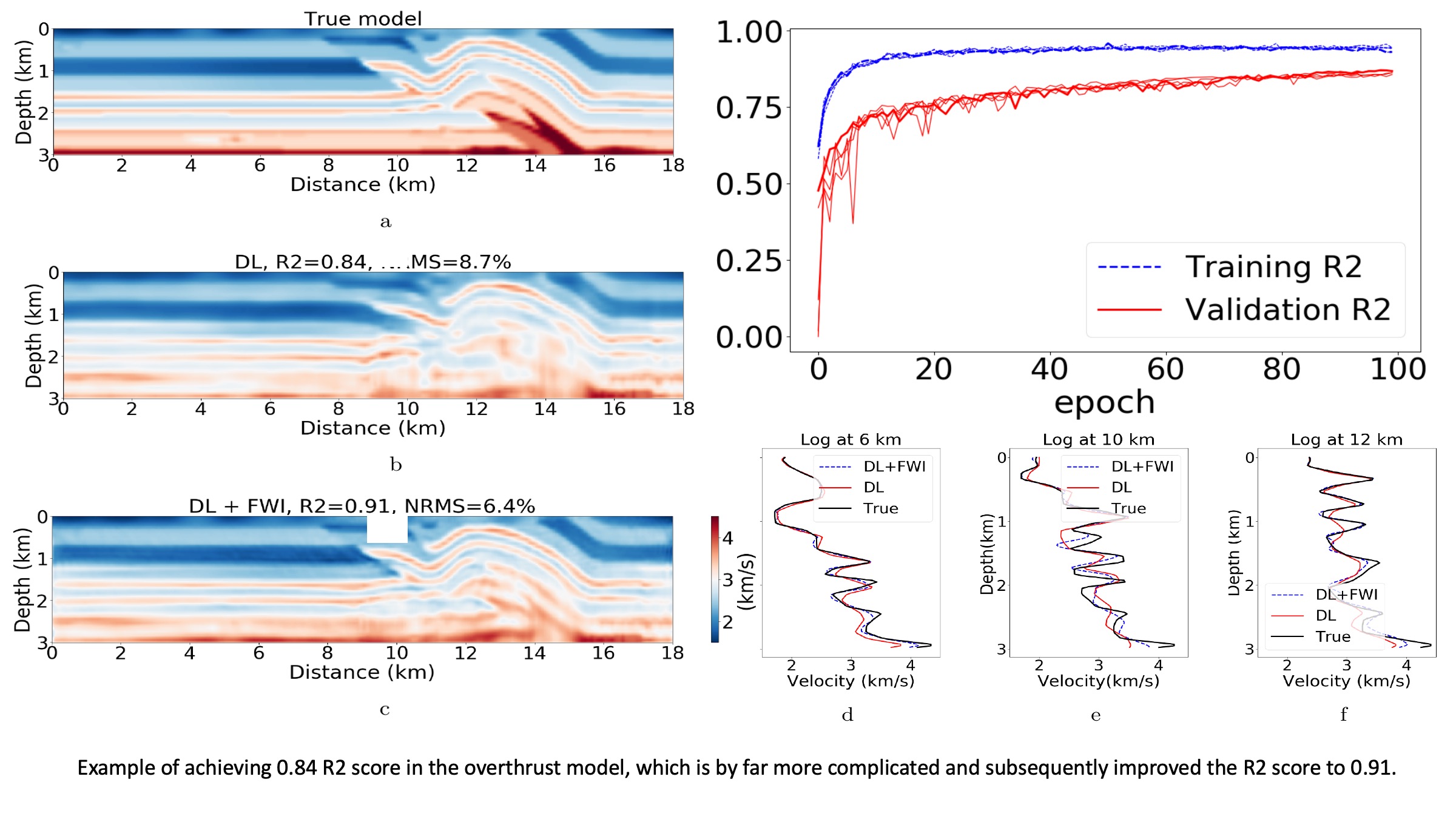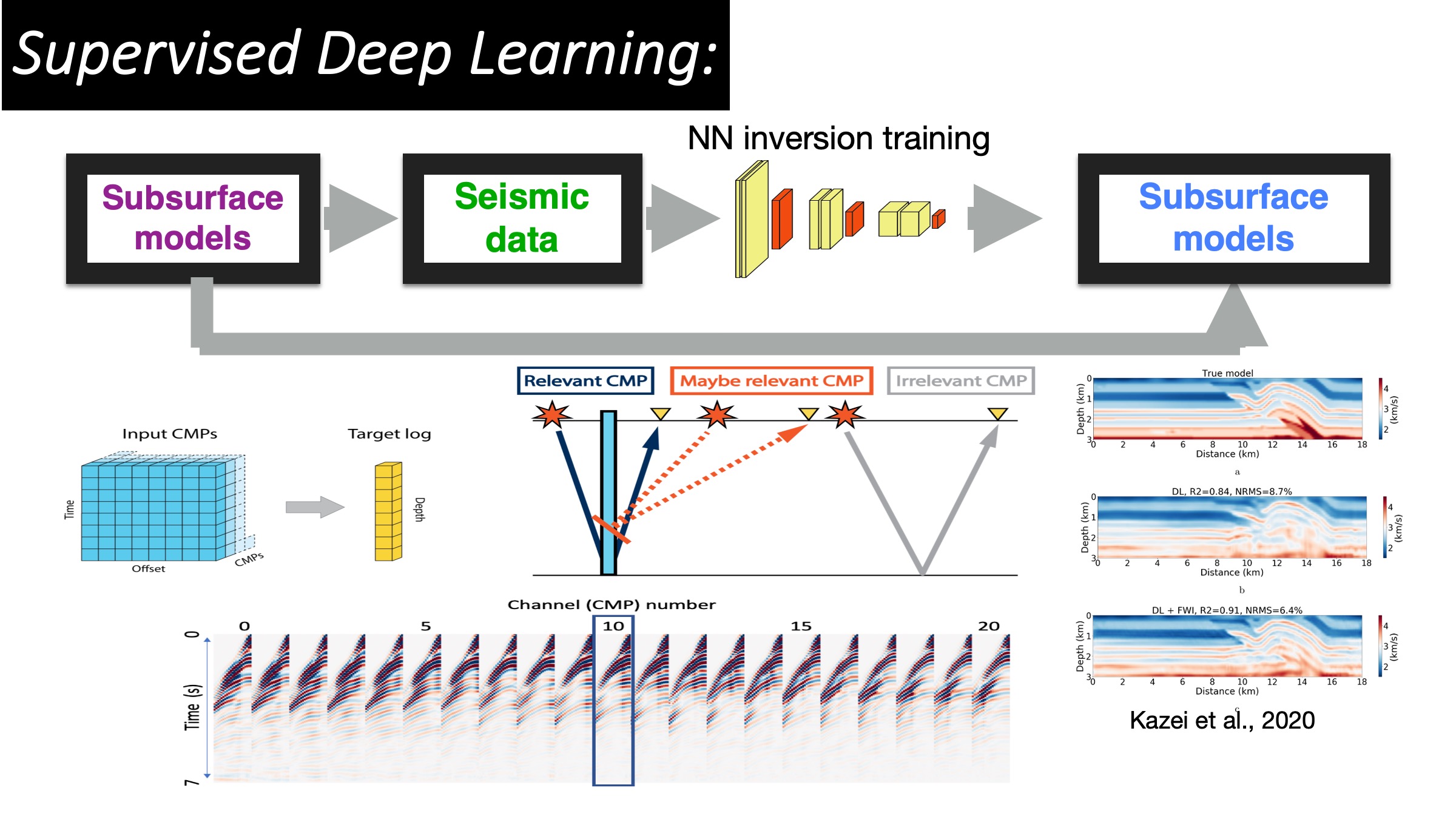Mapping full seismic waveforms to vertical velocity profiles by deep learning. New full-waveform inversion paradigm? (Kazei et al., 2020)
Building realistic and reliable models of the subsurface is the primary goal of seismic imaging. Full-waveform inversion (FWI) allows us to incorporate realistic physical descriptions of the Earth's subsurface through modeling to deliver the high-resolution estimates of subsurface parameters. However, FWI is a local optimization technique and hence requires a good initial model to start. Also, FWI relies on iterative modeling of full-wavefields; therefore, it is computationally expensive.
Here we construct an ensemble of convolutional neural networks (CNNs) to build velocity models directly from the data. CNNs are trained to map the seismic data directly into velocity logs. This allows us to integrate well data into the inversion and to simplify the mapping by using the regularity of active seismic acquisition. The presented approach uses gathers of neighboring common midpoints (CMPs) for the estimation of a vertical velocity log to accommodate larger dips relative to single CMP gathers. At the same time, we still benefit from the regularity of sampling in seismic exploration. Once the network is trained on a particular data set, similar data sets can be inverted much faster than with conventional FWI.

References
